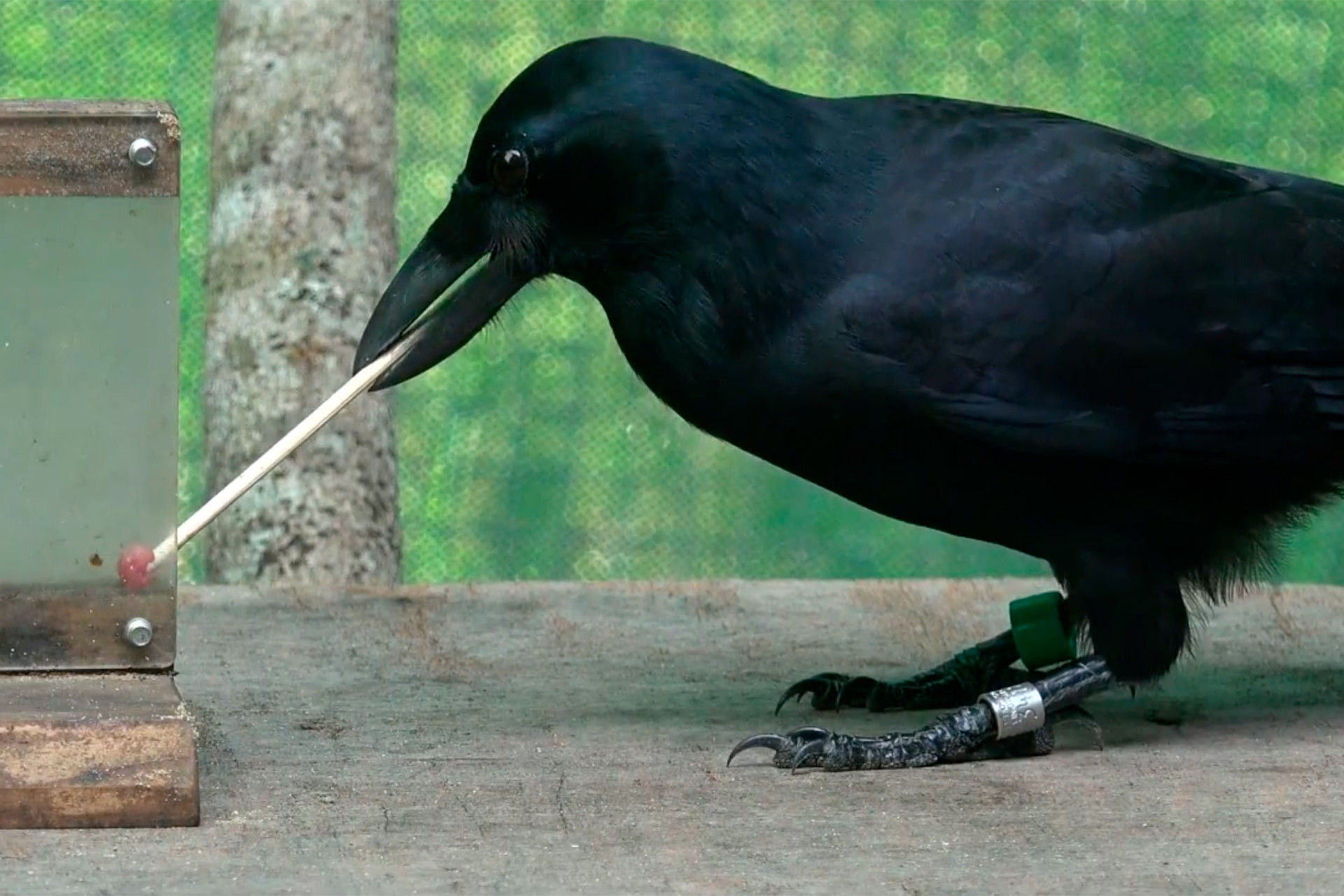Animal research: Ethics
Ethical considerations in animal research
After completing this lesson, you should be able to:
- Evaluate two studies with regard to their ethical considerations
- Discuss modern approaches to ethical standards in animal research
- Explain the implications of ethical considerations on animal research
Before beginning this section, please read Ethics in animal research.
In this section, we will be focused on the following key concepts:
- The Animal Welfare Act
- Cost-benefit analysis
- Speciesism
- The Three R's
- Utilitarianism
Before we begin...
Watch the following video. This video gives us some of the philosophical underpinnings of ethics in animal research.
In this part of the module, it is important not to add any more research to our list of studies for animal research. From the previous parts of this module, we have the following studies that we already have to discuss ethical considerations in animal research.
| Rogers & Kesner (2003) | Rosenzweig et al (1972) | Meaney et al (1988) |
| Friedman's discovery of leptin | Cases et al (1995) | Hendricks et al (2003) |
Please read through the following presentation on ethics in animal research and then answer the questions in the yellow box below.
Checking for understanding
1. Why don't the standard APA and BPS ethical standards for human research apply to animals? Do any of them make sense in animal research?
Because animals cannot communicate, most of the human standards are not practical. When writing on an exam, you should not use consent, right to withdraw, deception, anonymity, or debriefing to evaluate an animal study. The only one that can be directly applied is "undue stress or harm."
2. What is meant by a "cost-benefit analysis?"
A cost-benefit analysis should consider the number of humans that would benefit from the study, the effect on humans if the study is not conducted, the number of animals that are required for the study, and the harm that would be done to the animal. It could also, potentially, not positive benefits for the animal (e.g. treatment for an animal's health condition). If the harm (costs) outweigh the potential benefits, according to both the APA and BPS, animal research should not be carried out.
3. Often ethical considerations are considered to be subjective. Why?
The concept of "undue" stress or harm is not clearly defined and may be up to the researchers to interpret. In addition, one does not actually know the true value of an experiment until it is done. If we actually knew what the outcome would be, we would not have to do the experiment. So, knowing what we hope will be the outcome may bias us in determining the potential benefit to humans. Finally, the value one puts on human vs animal life is not constant - it is also subjective. Different cultural norms may result in different attitudes toward the value of an animal's life. This is why many are pushing for international standards in animal research.
4. What is one example of how we could reduce the number of animals used in experiments?
By sharing information among researchers, we could reduce the number of animals used. In addition, better techniques that do not lead to the death or impairment of an animal could reduce the numbers needed. Better planning so that experiments are well controlled and have high validity from the beginning, rather than having to redo research because of mistakes that should have been accounted for.
5. What is one potential implication of reducing the number of animals used in experiments?
By reducing the number of animals used, this will lower the sample size of studies, making the data potentially less reliable. This may lead to type I errors, rejecting a null hypothesis that should have been accepted.
6. What is one example of how we could "refine" experiments to reduce suffering in animals?
Researchers can use less invasive techniques, limiting injections, ablations, and lesioning of the animals. Animals need to be provided with better living conditions that mirror what they would have under natural conditions. There should also be trained vets available to help with the care and treatment of animals, including painless euthanasia.
7. What is one potential implication of refining our experiments to reduce suffering in animals?
Laboratories may not be equipped to provide the requirements for these standards. This will increase the costs of research. This may result in less research being done in certain areas unless there is an increase in funding.
Having to have more members of the team may have the benefit of researcher triangulation.
When animals live in natural conditions, this will help to increase the ecological validity of the research and decrease confounding variables. Animals raised in cages - either isolated or overcrowded - with minimal stimulation may actually not be representative of the animal. Stressors induced by the conditions they are kept in may be a confounding variable in research. This ethical standard may actually increase the quality of animal research.
8. What are two examples of how we could replace animals in research?
We can use computer models, in vitro testing, and more clinical trials on humans.
9. What are two limitations of replacing animals in research?
Models are limited by our current understandings of biological systems. Using cell cultures is not the same as testing on the whole system - so this may not provide representative findings. There are also ethical concerns with carrying out more ethical testing on humans.
Updates in animal ethics
What happens to animals when the experiment is over? In most cases, the answer is that they are euthanized - that is, they are killed. The following two articles give you a sense of how this is changing.
First, in most cases, animals are killed by carbon dioxide poisoning. Research shows that this may be a highly stressful way for animals to die. You can read here an article about Daniel Weary and his attempts to change the way in which animals are euthanized so that it would be more humane.
However, an alternative to euthanasia has been proposed - animal adoption. You can read this article which explains what is happening in the USA and what some of the issues are with adopting animals used in medical research.
Exam question: Discuss ethical considerations in animal research making use of research from the biological approach.
Criterion B. Knowledge and understanding
Marks are awarded here for showing an understanding of ethical considerations in animal research.
You should explain ethical considerations in animal research. This could include the Animal Welfare Act, the 3Rs, the philosophical discussion about consciousness in animals, or the use of a cost-benefit analysis.
Criterion C. Use of research
Marks are awarded here for both the choice of research and its explicit link to the question.
Technically, only one study is required for this essay. However, many strong essays use two studies. Often, one study is rather unethical in its approach and the other is in line with ethical guidelines - but this does not have to be the case.
Remember that this is the biological approach. Research needs to have a clear link to biological factors. In addition, the question may be asked with regard to "the brain and behaviour", "hormones and/or pheromones" or "genetics." In preparing for this essay, you should be sure that you have research for each of those possibilities.
Criterion D. Critical thinking
Marks are awarded here for critical thinking with regard to the question.
Do not evaluate the studies - except for ethical considerations. Comments about construct validity, sampling bias or ecological validity will not earn you any marks. Simply identifying the ethical considerations of a study will not earn top marks. You need to meet the command term - "Discuss." This is where you should discuss the reasons for the ethical considerations or the implications of applying them.
Thinking critically about research
The following text is a paragraph from a student essay to answer the question "Discuss ethical considerations in animal research used to study the brain and behaviour." Add the next paragraph, making reference to three different ethical considerations.
One study that had a major impact on education was the study by Rosenzweig, Bennet, and Diamond (1972). In this study, they wanted to see if stimulation in a rat's environment would lead to changes in the structure of the brain - or neuroplasticity. Rats were randomly allocated to one of three conditions. In the control condition, there were three rats in a cage. In the impoverished condition, the researchers placed each rat in an individual cage. The individual cages lacked the toys that were in the enriched environment. For the enriched condition, the researchers placed 10 - 12 rats in a cage containing different stimulus objects to explore and play with. All groups had free and adequate access to food and water. After 30 days, the rats were killed and their brains were examined. The rats in the enriched environment had a thicker cerebral cortex than those in the impoverished condition. The rats in the control condition also had more development than in the impoverished condition. This indicates that social interaction as well as playing with the objects had an effect on brain development.
Although this early study was important in our understanding of how the environment can affect the brain, the study's ethical practice needs to be discussed.
Continue to Animal research: Final assessment

 IB Docs (2) Team
IB Docs (2) Team

